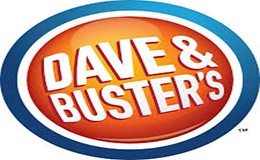What fun it is to imagine your loved ones’ excitement as they open special holiday gifts. Yet many children end up harmed from gifts that are dangerous. About 225,000 children a year go to the emergency room due to toy-related injuries.
As you create your holiday gift list this year, make safety your first priority in gift selection. Consider the entire family. A great gift for an older family member could be dangerous for younger children if they can access it.
Two gifts that are particularly dangerous for families with small children are small high-powered magnets and products containing button batteries.
Avoid Small High-Powered Magnets
Injuries caused by small high-powered magnets have risen over the past few years. These magnets, about the size of a BB pellet, are eight times stronger than ordinary magnets used in toys. Sale of this type of dangerous magnet was prohibited several years ago but courts later eased restrictions. The law now requires that products containing these magnets be labeled for sale only to “ages 14 years and up.”
High-powered magnetic sets may contain over 100 pieces. Some are marketed as “fun stress relief desk toys.” Other advertisements show robots, sculptures or creatures that can be built with these magnets. Marketing that claims these products are educational or creative may entice consumers to buy them for children. Older children and teens are at risk from magnets that look like jewelry, such as silver magnetic balls. They may use them to simulate nose or tongue piercings and then accidentally swallow or inhale the magnets.
If someone swallows more than one magnet, the magnets attract each other inside the body. This can cause tears and damage the stomach or intestines. Emergency surgery is often needed. The American Academy of Pediatrics advises families with children not to have high-powered magnet sets in their home.
Evaluate Products Containing Button Batteries for Safety
Button batteries can cause serious injury or even death if swallowed. Batteries about the size of a nickel are the most dangerous because they often get caught in a child’s esophagus. Anyone who has swallowed a button battery should seek immediate emergency medical care.
Products that contain button batteries and are marketed to children must have secure battery compartments that require a screwdriver or other tool to open. However, not all products on the market containing button batteries are designed for safety. Check for easy access to button batteries on any powered item. Don’t overlook flashing clothes or shoes, jewelry, key chains and toothbrushes. Cameras, watches and toys designed for older children may have easily accessible battery compartments. Singing greeting cards, talking book and flameless candles are often powered by button batteries. Contact the National Battery Ingestion Hotline at 800-498-8666 for more information.
Think Twice About Stocking Stuffers
Items used for stocking stuffers are often choking hazards. Choking is the fourth leading cause of death among preschool children. Take steps to protect younger family members. Even if choking hazards aren’t directly given to younger children, stocking stuffers may end up on the floor or other places where younger children can get to them.
Common choking hazards include toys with small parts, toys that fit entirely into a child’s mouth, small balls, marbles, latex balloons and tiny figures. A young child can choke on small hair bows, barrettes, earrings and rings. Keep office supplies, such as pen or marker caps, erasers and rubber bands, away from small children. Children younger than 4 years old should not be given nuts and seeds, hard or sticky candy, popcorn or chewing gum.
Safeguard Your Child From Injury
If you give a child a gift that requires protective equipment, such as a bicycle or scooter, include it as part of the gift. You can’t expect a child with a shiny, new bike not to ride it for lack of a helmet.
For children and teens who go to concerts, ride a farm tractor or participate in shooting sports, colorful hearing protectors make a great gift. If you are giving headphones to a child, choose those that have volume controls.
To protect your child’s eye health, don’t give projectile toys, such as darts and missile-firing toys. Don’t give pellet or BB guns to children. These are extremely dangerous and are now classified as firearms, not toys.
Buyer beware. Just because a toy is on the market doesn’t mean that it is safe. The American Academy of Pediatrics recommends thinking about how the toy might be used (or abused) and how much you will need to supervise or help the child play safely with the toy.
Brenda Schoolfield is a freelance medical writer based in Austin.













